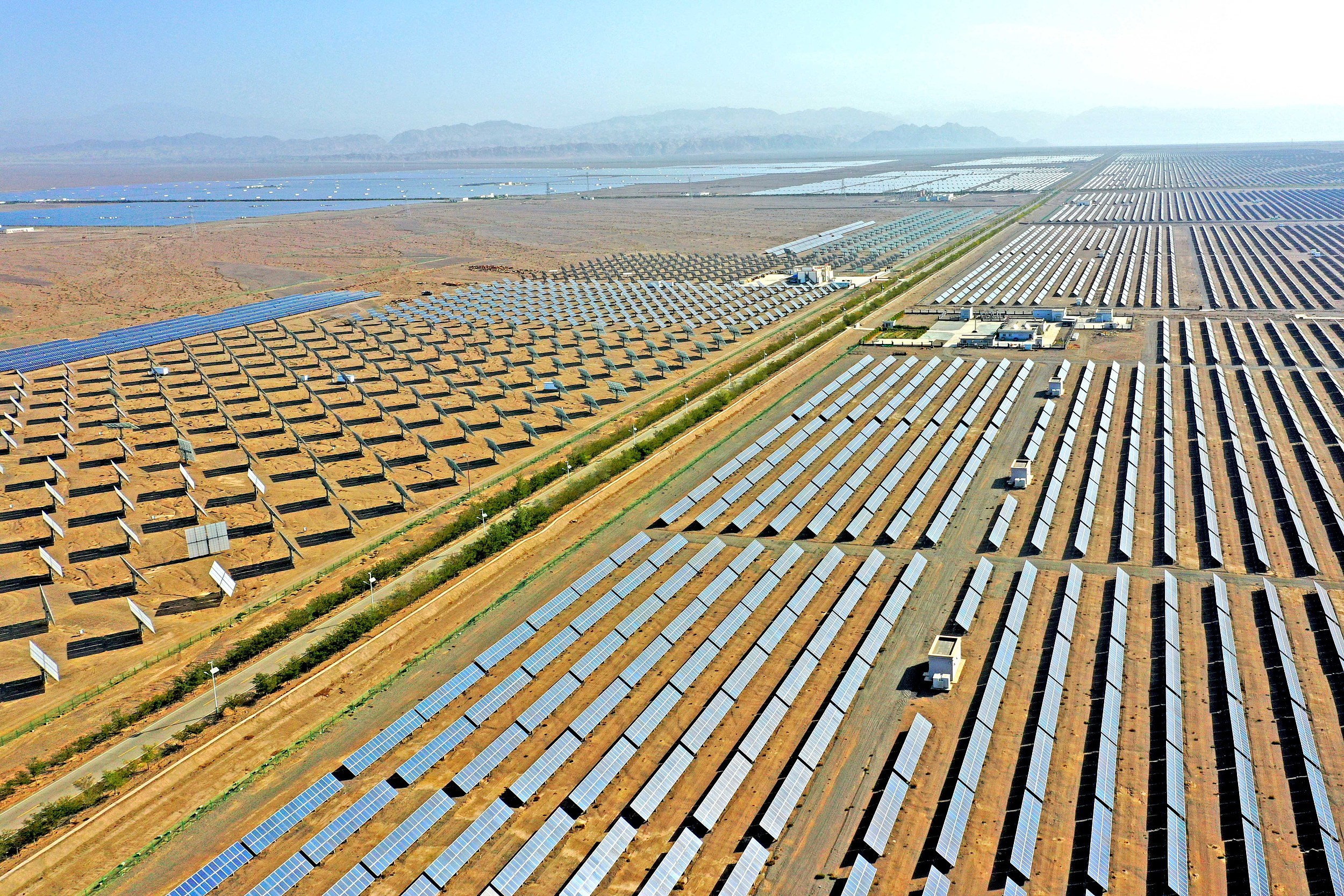U.S. Paying the Price for its Shortsighted Trade Policy

A great many of solar PV panels were installed in a PV industrial park in Hami, Xinjiang Uygur Autonomous Region. (PHOTO: VCG)
By Gong Qian
The U.S. is suffering from an acute shortage of solar panels, according to Wall Street Journal (WSJ). It reported that a large amount of solar panels have been detained by U.S. Customs for several months due to the so called Uyghur Forced Labor Prevention Act (UFLPA). Being enforced since late June 2022 the Act bans the importation of products with parts and ingredients from China's Xinjiang Uygur autonomous region.
More than 80 percent of the global solar manufacturing stems from China, in all stages of production including polysilicon, ingots, wafers, cells and modules, according to data from the International Energy Agency (IEA). The country is also home to the world's 10 top suppliers of solar PV manufacturing equipment. China has been instrumental in bringing down costs worldwide for solar PVs, with multiple benefits for clean energy transitions, said IEA.
Xinjiang has historically been a major player in the solar industry, with roughly 41 percent of the global manufacturing capacity for the crucial panel component polysilicon, according to Clean Energy Associates.
As the second-largest solar market, the U.S. relies on imports for most of its panels, largely from China and other Asian countries, Bloomberg reported. The UFLPA hurts the interests of others and the U.S. itself has paid the price for this ban.
According to the WSJ's reporting and sources, an estimated 23 gigawatts' worth of big solar projects have been delayed so far this year-almost twice as much as was installed in all of 2021 and approaching a third of all such projects in development.
Meanwhile, the overall installations of new solar panels in the U.S. have dropped by nearly a quarter in 2022, according to the U.S.' Solar Energy Industries Association (SEIA).
With shipments detained at ports, suppliers are pushing up the price of solar panels in the U.S., which are now roughly 30 percent more expensive than those for Europe or Australia, Rebecca J. Kujawa, CEO of Florida-based power company NextEra Energy, told the WSJ.
Furthermore, it has impacted the U.S. Inflation Reduction Act (IRA). The IRA is the largest investment in carbon emissions reduction in the country's history. It allocates 369 billion USD to reduce greenhouse gas emissions and invests in renewable energy sources as part of efforts to reduce America's planet-heating emissions by about 40 percent by 2030, compared with 2005 levels, said the Institution of Engineering and Technology (IET).
"America's clean energy economy [is] hindered by its own trade actions," SEIA president and CEO Abigail Ross Hopper told IET. "The solar and storage industry is acting decisively to build an ethical supply chain, but unnecessary supply bottlenecks and trade restrictions are preventing manufacturers from getting the equipment they need to invest in US facilities," said Hopper.
To cope with the problem, the U.S. developers and suppliers are looking for alternatives and financing the construction of solar manufacturing. But it is not easy as it will take years building more factories to expand its capability and satisfy its growing demand.
On the other hand, cost competitiveness is a key issue. According to IEA, China is the most cost-competitive location to manufacture all components of the solar PV supply chain. Costs in China are 10 percent lower than in India, 20 percent lower than in the United States, and 35 percent lower than in Europe.
Although it is understandable that the U.S. is making efforts to ease its dependence on imports, especially those from China, the facts show that it is seemly unfeasible.


